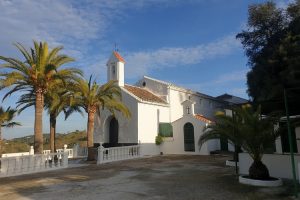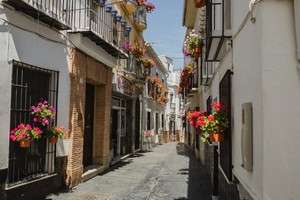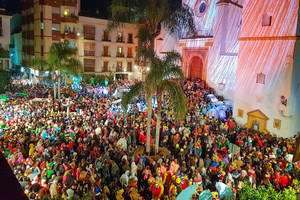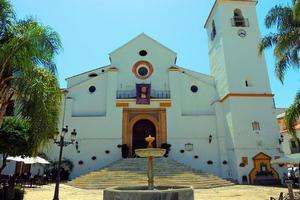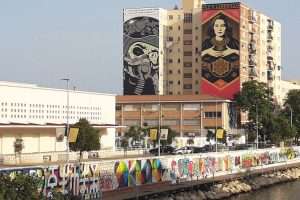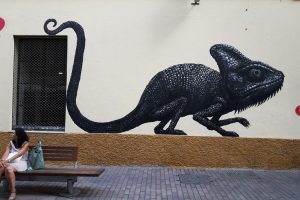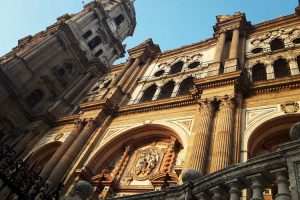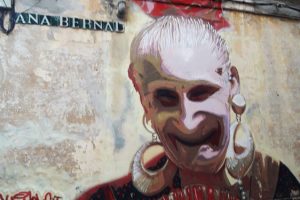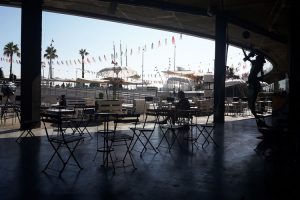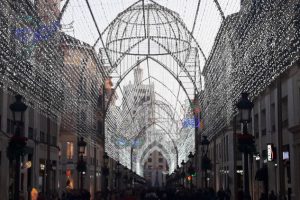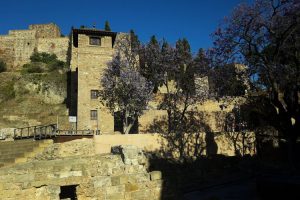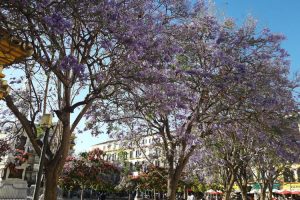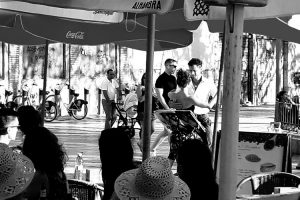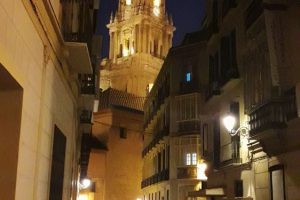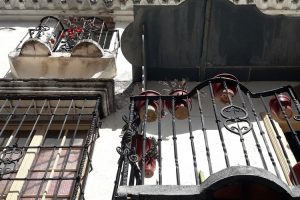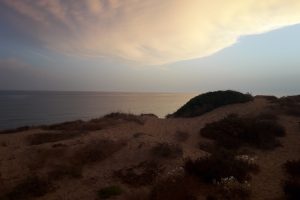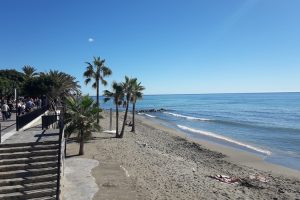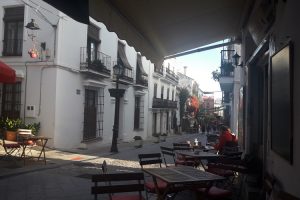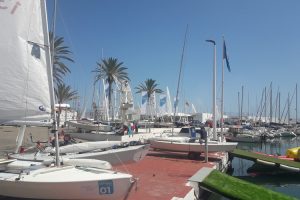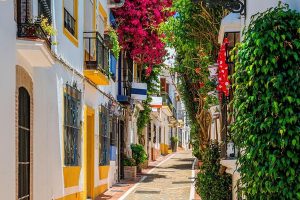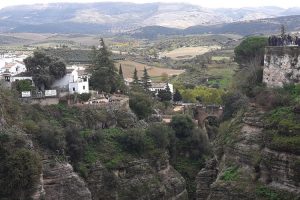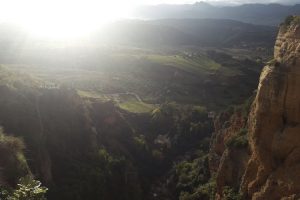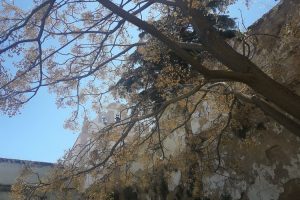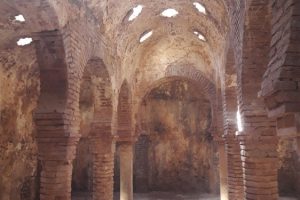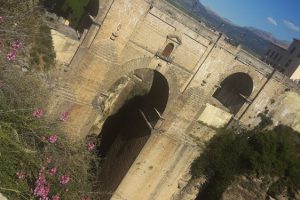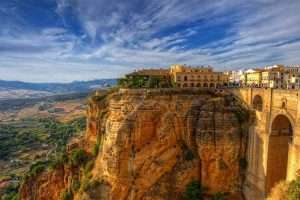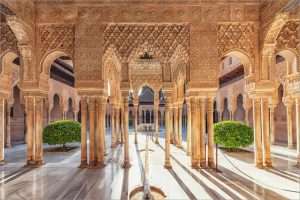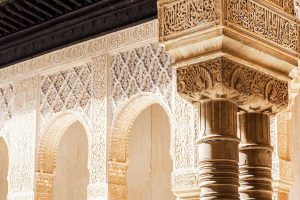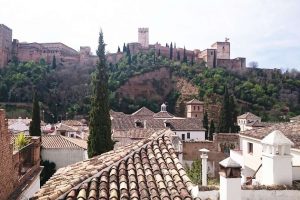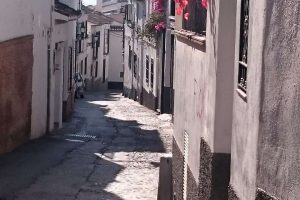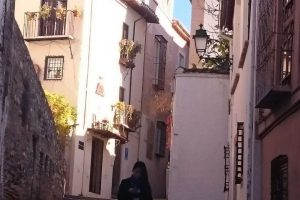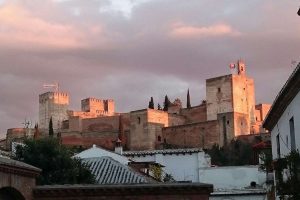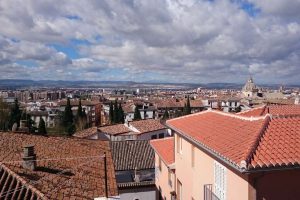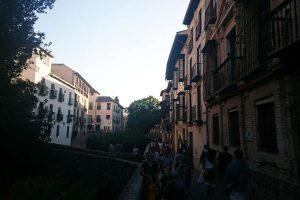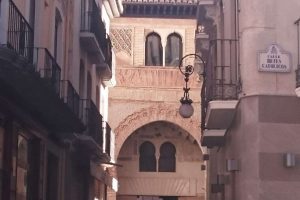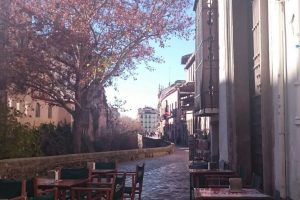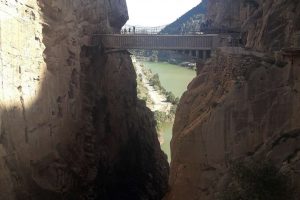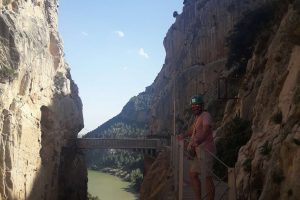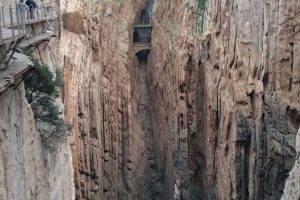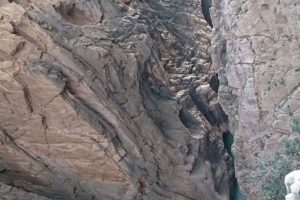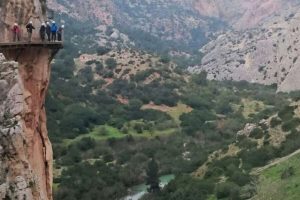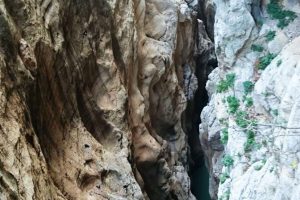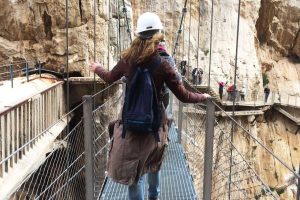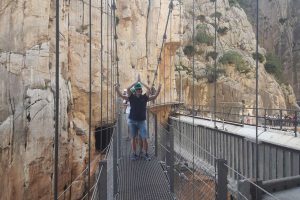Coín and its surroundings
Coín is a typical Andalusian white village, situated in the Valle del Guadalhorce region, where you can enjoy nature and mountain views. The town is situated about 30 kilometers from Marbella, the popular Costa del Sol and 40 kilometers from the vibrant city of Málaga and the Airport. The long history of Coín presents the visitor with several tourist attractions and religious monuments. One of them is the hermitage ‘Ermita de la señora de la Fuensanta’ that you can find above the finca just 5 minutes walk away. It is a chapel dating from 1529 that has undergone reforms during the 18th century. Every year during the first week of June, pilgrimages called ‘Romerías, take place here. This happens with beautifully decorated horses, carriages and people in traditional flamenco clothing. Next to the ermita there’s a big terrain with little ‘houses’, some beautifully decorated, where this festivity takes place every year. During the rest of the years these ‘houses’, that are more like bars, are abandoned and it looks like a ghost town.
In the Coín area you can find natural parks for hiking, like Barranco Blanco or the pine forest ‘Los llanos del nacimiento’. There are more beautiful pintoresque mountain villages close to Coín worth a visit, like Monda, Ojén, Mijas Pueblo, Tolox, Alozaina, etc. You can make a tour along all these villages.
Coín has got everything you need, all supermarkets, bars and café’s are nearby and every Sunday there’s a nice market with vegetables and fruits of local farmers and a flee market in and next to shopping mall La Trocha. It is really a pleasure to do your weekly groceries there!
Another special event in Coín is said to be New Years Eve, where there’s a huge party with people dressing up.
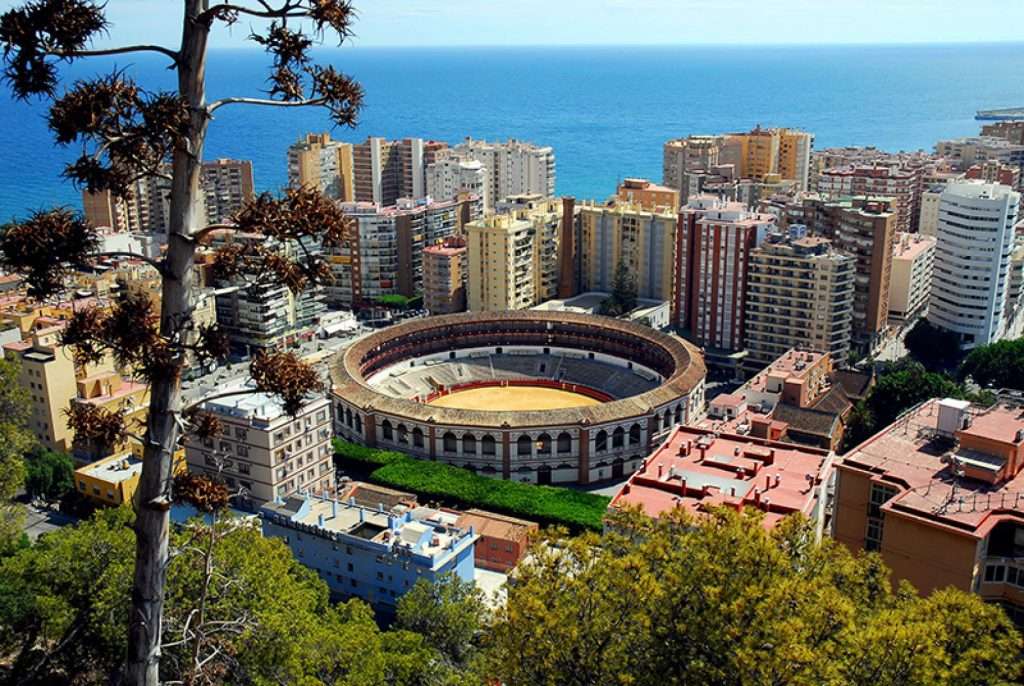
Málaga
Málaga is a municipality and the second largest city in Andalusia, and the sixt largest city in Spain. It is the capital of the province of Málaga of the same name and has got about 569.000 inhabitants.
David and Birgit had their first date in Málaga and not only for this reason Málaga has got a special place in their heart. Málaga is a vibrant city with lots of museums and (street) art. It has got beaches, a lively harbour, lot’s of interesting historical buildings to visit, a beautiful park and botanical garden, artistic ‘barrio’s’, like SOHO and ‘Lagunillas’. Málaga also has got plenty of nice bars, terraces and restaurants and more and more vegan restaurants! Our favorite vegan restaurant, MIMO, is in Málaga. Birgit has been a tourguide for Dutch-speaking people on bicicles in Málaga for a little while.
A very important Airport, where all the tourists of the Costa del Sol fly to, is Málaga Airport. Málaga and Málaga Airport are at about 40 minutes drive from Finca Pereila.
Marbella and the Costa del Sol
Marbella
When you drive from Finca Pereila to the coast you end up in Marbella, just half an hour away.
Marbella is known as a luxury seaside resort, but Marbella also has a rich history, which you will find in the charming historic city center, with in the middle the Plaza de los Naranjos, a romantic square full of terraces under, as the name says, orange trees. On this square you will find the old town hall, built in the 16th century in Renaissance style with a chapel with beautiful frescoes.
The old city walls have remnants from the Arab era as well as the remains of an Arab castle, ‘Murallas del Castillo.’ Also worth visiting are the Avenida del Mar with statues of Dali, the Paseo Marítimo: a long boulevard where you can stroll along the beach, the many beach bars, shops and restaurants, there are a few parks with cooling shade, tropical plants and very old trees and of course the luxurious marina Puerto Banús, to sniff some luxury.
Marbella is located at the foot of the Sierra Blanca with La Concha mountain towering over the city. La Concha provides the pleasant microclimate in Marbella because it blocks the bad weather. You can take a walk that starts at Refugio de Juanar where you climb La Concha, which is 1200 meters high.
Costa del Sol
The Costa del Sol is the area on the Mediterranean Sea in Southern Spain between
Sotogrande in the west and Nerja in the East and it is the southern part of the Andalusia region of 150 km long, with Malaga as its capital.
The Costa del Sol is one of the most popular places in Spain to go on holiday, mainly because of the wonderful climate all year round. The beautiful beaches and the many Natural parks are only some of the many attractions.
About 1 million people live on the Costa del Sol, of which no less than 18% are foreigners. In popular places such as Mijas and Marbella, almost half are foreign.There are 320 days of sunshine a year, little rain and temperatures are pleasant all year round. Due to the sea breeze, it is less hot in the summer than in the interior and the temperatures in the winter are mild; the temperature rarely falls below 16 degrees during the day. The Costa del Sol is easily reached via Málaga Airport, approximately 40 minutes from Finca Pereila.
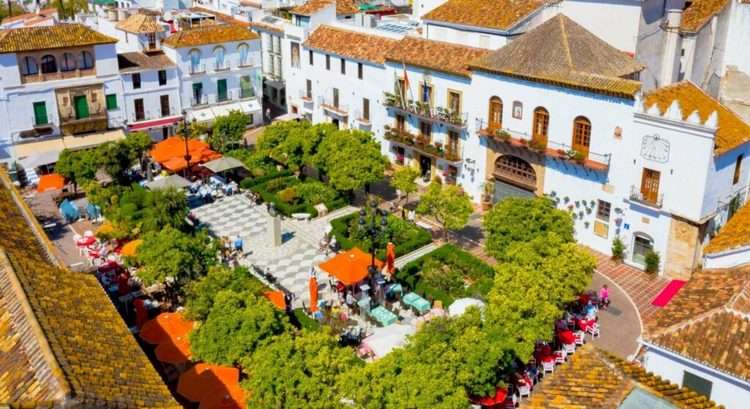
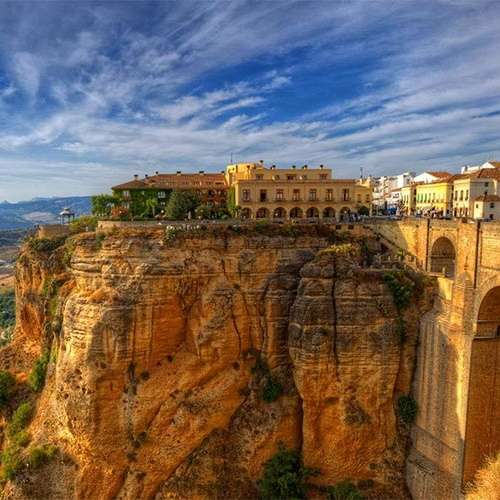
Ronda
About 50 km away and 1:15 hours drive from Finca Pereila is one of the most beautiful cities of Andalusia, Ronda. The trip to Ronda through the mountains is already very worthwhile and we advise everyone who visits our finca to drive at least 1 day up and down to Ronda. The mountain town is located at an altitude of 750 meters and is split in two by the river Guadalevín, which has left a deep gorge. This deep gorge, the ‘Tajo de Ronda’ is also what Ronda has become famous for. The entire gorge is about 50 meters long and on average 100 meters deep. In Ronda there are 3 bridges over the El Tago gorge: the Puente Romano, the Puente Viejo and the most famous, the Puente Nuevo.
This impressive bridge of 120 meters high was built in 1751 and connects the old Moorish center with the newer El Mercadillo. The best way to experience the small town is simply to wander through the narrow winding streets and quaint squares of Ronda. Another
special attraction in Ronda are the Banos Arabes. These Arab baths date from the period of the Moroccan Almohad dynasty (around the 13th century). The Arab baths are considered one of the best preserved bathhouses in Spain.
Setenil de las Bodegas (17 km from Ronda)
Andalusia is known for its many small white villages. One of the most beautiful white
villages is Setenil de las Bodegas, which is only 17 kilometers north of Ronda. What
makes this village extra beautiful are the houses that are partly built into the rocks.
Definitely a nice detour if you have some time left after your visit to Ronda.
Granada
According to Birgit, who lived in the province of Granada for 3 years and 1 year in the centre of Granada in the beautiful old Moorish district of Albaicín, Granada is the most beautiful city in Andalusia and perhaps even of Spain.
Granada is located in the Southeast of Spain and is the capital of the province of Granada. The city has about 237,000 inhabitants. This makes it the fourth largest city in Andalusia, after Seville, Málaga and Córdoba, and the 17th largest city in Spain. Granada is a mix of Spanish but especially Moorish influences. The impressive Alhambra is the most admired and visited landmark of the city of Granada. Granada is located at 738 meters above sea level, at the foot of the Sierra Nevada mountain range. Centuries ago it was the capital of the Empire of Granada and the Moorish Al-Andalus. The Moorish population in Granada lived from 756 around the Albaicín district and the Alhambra. In the Arab Al-Andalus, the
city was very important.In 1492, after bloody wars between the Christians and the Moors, the Moorish Empire came to an end, but the Moorish influence is still very much present in Granada. In the Albaicín there are many Moroccan shops and Moorish ‘teterías’ (tea houses). Granada has a university and is really a student city. The Realejo district, which used to be a Jewish quarter, is now a lively student area with cozy, affordable cafes and
restaurants. On the other hand, the Sacromonte district is more the district of the ‘gitanos’ and flamenco. Here you can enjoy flamenco in one of the various cave houses.Granada is located at the foot of the Sierra Nevada mountain range. As the name suggests, there is snow for a large part of the year and you can enjoy winter sports in less than 1.5 hours from the Costa del Sol. The mountain range contains 16 peaks that are higher than 3,000 meters. The Mulhacén is one of them as the second highest mountain in Spain. In the Sierra Nevada you will find not only beautiful nature, but also a wide variety of flora and fauna. 20% of all animal species in Spain live in the Sierra Nevada. Although you can ski very well in winter, it is also worth visiting in summer, because there are beautiful hiking trails through the mountains with beautiful views.
The Alhambra
When you visit Granada, we recommend that you also visit the Alhambra! The Alhambra is a jewel and especially the Nasrid Palaces are magnificent and an example of the beautiful Arabic architecture. To avoid disappointment, we recommend buying tickets for the Alhambra early in advance. This can be done via the official website www.alhambra-patronato.es, but there are several websites where you can buy entrance tickets with or without a guide. Make sure to include the Nasrid Palaces at the entrance!
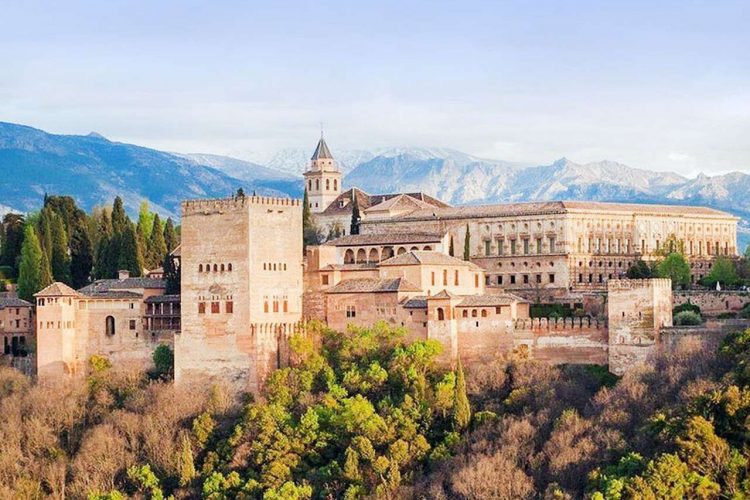

Caminito Del Rey
The Caminito del Rey is a popular activity at only 45 minutes drive from Finca Pereila. It is a spectacular aerial trail built in the walls of the Gaitanes gorge. It is a path terraced onto the gorge with a length of 3km in long sections and a width of barely 1 metre. The trail begins in the municipality of Ardales, goes through Antequera, and ends in El Chorro (Álora).
This path is hanging on the vertical gorge walls around 100 metres above the river. The path was built because the Hydroelectric Power Station El Chorro, owner of Salto del Gaitanejo and ‘Salto del Chorro’ needed an access between the two ‘leaps of water’ to facilitate crossing of maintenance operatives as well as materials’ transport and vigilance. Works began in 1901 and concluded in 1905. The trail started by the Renfe railway tracks and covered the Gaitanes gorge, communicating and facilitating the way on both sides. To open this great work, the King Alfonso 13th travelled in 1921 to the Conde del Guadalhorce dam crossing the trail previously built. It was at that moment when people started calling it “Caminito del Rey”, a name that still prevails today.
We advise you to buy tickets for the Caminito del Rey in advance, as they are almost always sold out in the short term. Tickets can be reserved via the official website https://caminitodelrey.info/en

